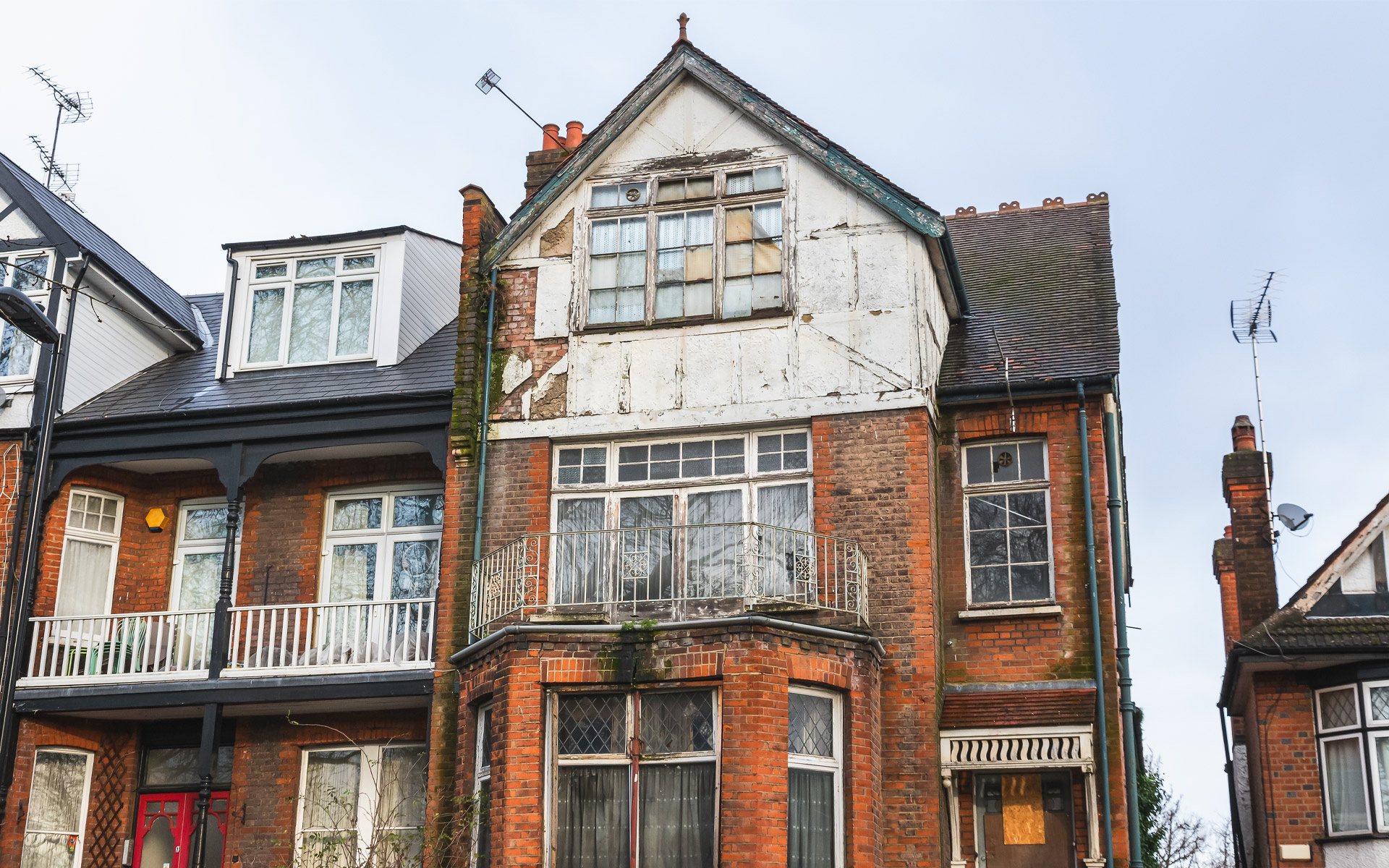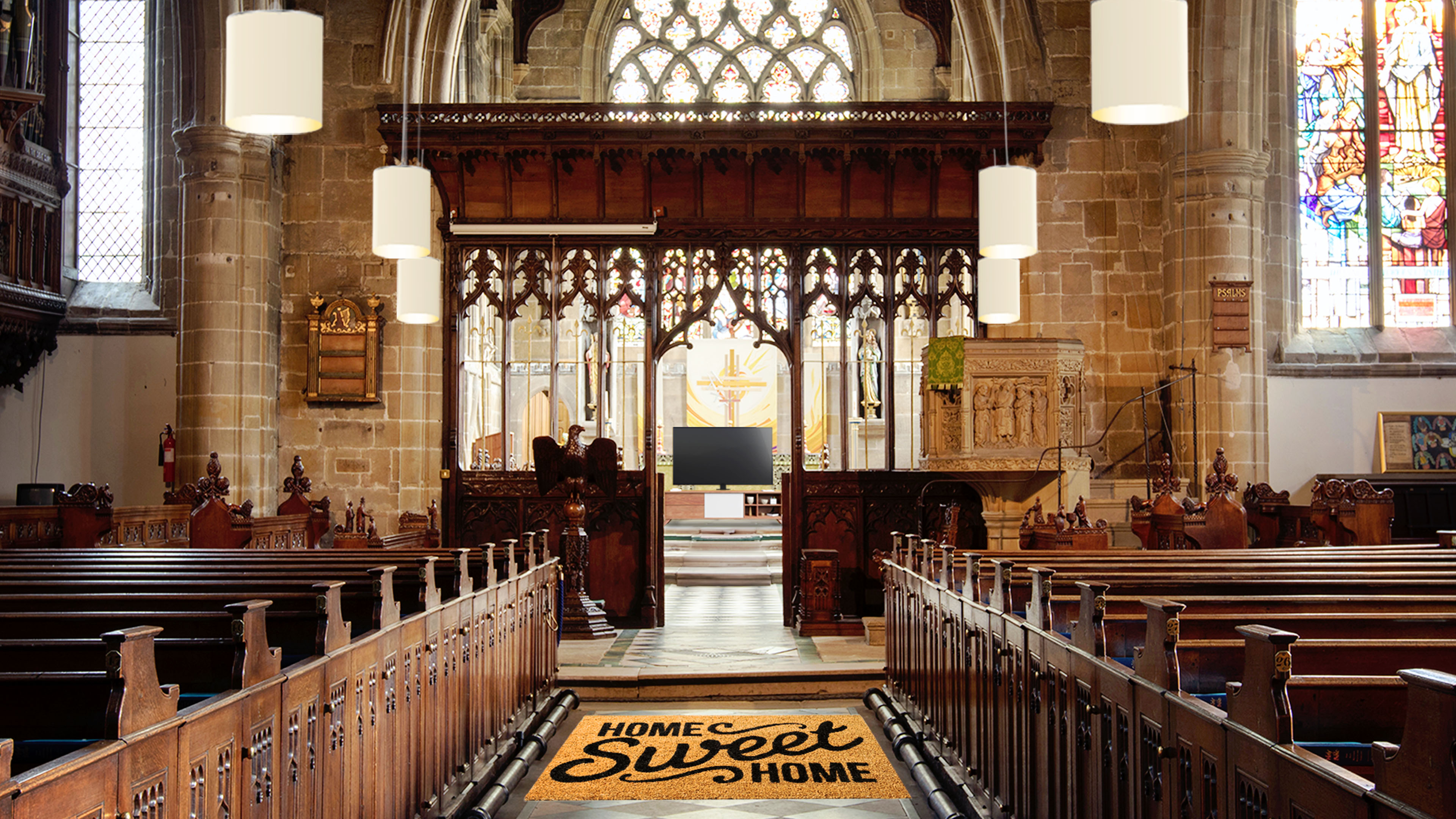It is a sunny September morning in Strood, a Medway town about 30 miles south-east of central London.
Outside a handsome, four-storey Victorian house a man, Chris, is waiting while a locksmith fiddles with its door. The front garden is so badly overgrown with brambles and buddleia that the house’s basement and ground floor windows are largely hidden. A neighbour comes out to complain that he has had to cut the vegetation back when it has grown across his own path.
The locksmith opens the door and Chris enters with, it has to be said, some apprehension. There is a faint smell of mildew and every room, he discovers, is stuffed with piles of furniture, cardboard boxes, linens, old toys and papers. But – apart from a dead rat near the back door and a small area of damp in an attic room – there are few horrors. “What a relief,” he says. “I was expecting far, far worse.”
The house belonged to Chris’s late mother-in-law and, following a family dispute, has not been occupied for the three years since her death. It is hardly an aberration. A short stroll around any neighbourhood will quickly reveal homes that are left empty and which could be used to relieve Britain’s housing crisis.
Based on council tax records, the charity Shelter puts the number at 261,000 in England and Wales. Other campaigning groups say that, once council tax-exempt properties (such as those that are empty because their owners are in care homes or the property is going through a drawn-out probate), temporarily unoccupied and uninhabitable homes are included the figure rises to about 1.2m, and, according to one piece of government research, as many as 1.5m. (However, this 2021 census data was collected during the COVID-19 pandemic and some people may have moved back in with family members, leaving more unoccupied dwellings.) There are a further 47,000 and 21,000 empty homes in Scotland and Northern Ireland respectively.
“I would quite openly and honestly say that if there are 1.2m empty homes, then there are 1.2m reasons why,” says Adam Cliff of the Empty Homes Network. “Every property, owner and circumstance is unique.”
There are, however, he feels seven broad reasons why properties fall out of occupation: The owner doesn’t have enough money to refurbish or upgrade a property; the owner has too much money and is happy to leave their property empty as house prices rise; The owner has too little time to manage any works; the owner has too much time and potters with no sense of urgency; The owner has too little knowledge about how to manage a property and feels overwhelmed; the owner has too much knowledge and is intimidated by the various rules and regulations.
The seventh “key factor” that covers all owners, Cliff believes, is a lack of vision. “If they have a property that could be housing someone or enriching them and they’re not doing that,” he says, “then it’s hard to justify.”
Property as an investment
So how did the UK end up in this position and can these empty properties help ease its housing crisis? The blame lies partly with the British relationship to home-owning – every Englishman’s home is famously his castle, meaning that there is a squeamishness about telling people what they should do with their properties. But property in the UK has also become a sought-after investment which, according to Chris Bailey of Action on Empty Homes, has skewed our relationship with it.
“We have a problem with seeing property as an asset class,” he says of the temptation to hoard properties even if this ends up with their owners having to pay council tax, utilities bill and insurance. “A lot of people see a property as a pension. It’s definitely become a factor.”
Although the popular image of an empty home is a derelict shell, according to Cliff, the vast majority require, like Chris’s, fairly minimal work to bring them back into occupation if rescued early enough: redecoration, new flooring, possibly a new bathroom or kitchen. The longer they remain empty, however, the more likely they are to fall into disrepair and to draw negative attention, potentially attracting vandals, squatters or vermin and casting a blight on neighbouring properties.
There are attempts to encourage owners either to sell or rent their empty homes but most of these depend on local authorities identifying the properties and, crucially, the owners themselves. The funding has been haphazard since 2015 when the Empty Homes Programme, a 2012 initiative started by the UK’s coalition government, was abandoned.
The programme allowed local authorities and housing associations to work with owners of empty properties, offering grants towards refurbishment in return for the right to rent them to social tenants. Although the programme only delivered about 10,000 properties – amid accusations that it was too bureaucratic – the cost of reoccupying these homes averaged about £20,000 per property, far, far cheaper than building new.
“It’s frustrating that we had a programme that was successful” – and might have become more so as it bedded in – “which stopped, making the problem worse,” says Bailey. “If you look at the figures since 2015, empty homes have grown at an average rate of about 5% every year since then. It is illogical that we have growing numbers of empty properties when we have more and more people needing homes.”
Action on Empty Homes advocates for the Empty Homes Programme – or a similar scheme – to be reinstated. But is there an alternative way of persuading property owners to repopulate them? A council tax surcharge of 100% was introduced in 2013 for properties that have been empty for two years and, from next year, the vacancy period will reduce to one year. It is largely seen as ineffective as the number of empty properties has grown steadily. For wealthy speculators interested in capital growth – particularly overseas buyers looking for a safe haven for their capital – it is unlikely to be a concern.
In Wales, from April 2023, the maximum level at which local authorities could set council tax premiums on second homes was increased to 300%.
Bailey also points out that a house which falls into serious disrepair while empty could end up being declared uninhabitable and avoid the charge altogether, thus creating an incentive for other owners to do nothing. Sadly, there seems little urgency in tackling empty properties.

An neglected house in Hornsey, London. The average house price in the area is £785,400 (Zoopla, 2024).
Make an empty house a home
While not every empty house will be salvageable – or even suitable – for reoccupation, there are many hundreds of thousands that could be repurposed. The charity, Crisis, suggests that 40,000 properties could be brought back into use in three years; Shelter has published a report outlining the benefits of targeting funding for empty homes in 10 cities.
“There are important financial and social reasons to bring empty houses back into circulation,” says Bailey. “There are 117,000 families in often very low-quality temporary accommodation. We are currently spending £2.2bn a year on this and the health and educational outcomes are likely to be very poor. The government wants to decarbonise and empty homes are a fantastic place to start: people can be taught the skills [involved in making homes greener] and the properties will be more energy efficient and attractive as a result. Britain lags behind the rest of Europe in its housing, so many are cold and draughty.”
Both he and Cliff favour encouragement rather than enforcement approaches when it comes to bringing homes back into circulation. They suggest reduced capital gains tax for owners selling the properties to social landlords; reduced stamp duty for private buyers to make the properties more attractive; and matched funding or low-cost loans to help owners unable to afford refurbishment works.
But, other countries have proven the need for enforcement as well. The Brussels regional government introduced an annual tax of €500 for every square metre of an unoccupied residential building’s façade (a typical British semi-detached house frontage would measure about 30m2). In 2023 in Catalonia, the government passed legislation to force owners to sell their properties to local authorities if they were unable to “justify” keeping them unoccupied. Vancouver has perhaps the most notorious tax, charging owners of empty homes 3% annually of the property’s value. Even a similar 1% levy in the UK (where the average house price is, according to the Land Registry, £283,000, rising to just over £500,000 in London), could be significant enough to get all but the wealthiest to take action.
Or so you would think. According to Chris Bailey, property ownership in the UK is often opaque making it extremely difficult for officials to track down owners and use the very limited enforcement powers that they have. Properties that have not changed hands in many years might not be recorded at the Land Registry. Some buyers – especially those worried about their assets and their privacy – use complex offshore holding companies to buy properties. Other people, incredibly, may not know that they own a particular house if they are the distant relative, and eventual heir, of someone who has died without making a will.
“In countries that have much more transparency, it’s far easier to impose vacancy taxes,” says Bailey. “To make any of these measures work, you need a register of ownership and usage. There are local authorities that have had to resort to using heir hunter companies to ascertain ownership.”
Back in Strood, Chris is phoning around house clearance companies and tracking down someone to hack through the property’s garden. Once the house is cleared, he intends to put it on the market, priced to sell, in the hope that it might be occupied again within the next few months. “It’s a nice house, it could make someone a great home,” he says. “It’s a shame that it’s been left empty for so long.”
“If they have a property that could be housing someone and they’re not doing that, then it’s hard to justify” Adam Cliff, Empty Homes Network


